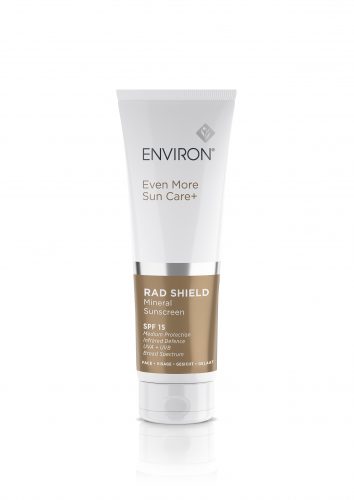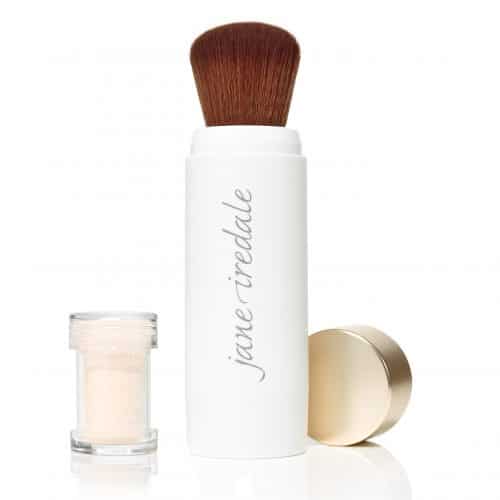Sunscreen Safety – Is Your Sunblock Doing More Harm Than Good?
As we step into another season of renewal and enjoy the plentiful dose of Vitamin D that daylight savings provides, choosing the right sunscreen that is safe for both you and our environment has never been more important.
Most sun protection products house a myriad of harmful chemicals that affect our already fragile marine life. While we swim and shower, sunscreen washes off and enters our waterways. This in turn, accumulates in coral to cause bleaching, the photosynthesis process of green algae is impeded, hormones in male fish become affected to show female characteristics and deformation in young mussels, coral and sea urchins. These are just a few examples of the effects that suncare has on our aquatic environment.
As part of a National Academy of Sciences study, researchers are currently assessing the ecological risks and impacts of sunscreen ingredients on the market. This is expected to be completed in 2021.
However, all hope is not lost. There are a couple of positive changes we can make to our sun care regime to ensure that we are protecting ourselves from ultraviolet light while respecting our planet and the organisms that we cohabit with.
Today, we talk to Dr. Des Fernandes, Founder of Environ, about these solutions and what exactly it is that we need to avoid.
What is your stance on chemical vs mineral sunscreen?
I am a very strong believer that nothing is as perfect as we would like it to be and this is particularly true about chemical and mineral sunscreens. We always have to make a compromise to promote the better features while trying to minimise the negatives. There are “good and bad” things about mineral and chemical sunscreens and so we need to examine them in proper context. I wish life was as clear cut as the myths that propagate on Google.
When we started making sunscreen right at the very beginning, I pointed out that we did not know the effects of accumulative doses of these fairly new chemical sunscreens, but while I was thinking about us humans I did not consider the ecological contamination issue. I believe that I am still right, that we should use only SPF 15 and the minimal amount of chemical sunscreens while depending mainly on mineral sunscreen (TiO2).The TiO2 constitutes about 75% of the sunscreen protection whereas the chemical sunscreens account only for about 25%. In that way you could say that essentially Environ has been using mineral type sunscreen since the beginning.
We wanted to have a completely mineral sunscreen but unfortunately, in those days we could not deliver on our philosophy of always supplying antioxidants with sunscreens. The problem was the presentation of the minerals which allowed interaction with the very active antioxidants and so they were effectively neutralised by the minerals. Nowadays, we can use minerals that are well coated and they do not interfere with the antioxidants we have selected. Of course with mineral sunscreens you can use as high an SPF as you like but then of course texture and surface colour become problems if it is too high.
In summary, I will use either the Mineral RAD Shield or the Original RAD. I would advise people who are allergic to organic sunscreens, or those who prefer to avoid organic sunscreens, to use RAD Shield.

Environ RAD Shield Mineral Sunscreen, $93
What does it mean to be ‘organic’ in a sunscreen?
Sunscreens are differentiated into either organic molecules or inorganic (mineral) molecules. This is international and also in the legislation.
Chemistry is divided into “inorganic” chemistry using elements and their combinations (e.g. H2O, CO2, lead sulphate, etc) or “organic” – molecules with carbon generally manufactured by plants and animals. However, they are also synthetically created in laboratories, hence the term organic chemical sunscreens.
What are the ingredients within organic sunscreen that we need to avoid and how do they affect our bodies?
This is a difficult question to answer. In nature one always has to consider the dose of the chemical in order to understand its toxic potential. At this moment, we do not have any evidence of toxic effects on humans of any of the commonly used sunscreens used in the typical doses of say SPF 50. What we do know is that these chemicals are absorbed into the skin and research has also shown that within an hour, one can detect these chemicals in the blood stream. At this stage we do not know of any harmful effects.
Environ in 1990 knew that the ingredients must be absorbed and we also understood that we did not know the long-term effects. That’s why when RAD was formulated, we used the lowest possible levels of organic sunscreens and made up the rest to SPF 18 (in the original description – but now the same formula is only allowed to claim SPF 15) with Titanium dioxide that is far more stable and not absorbed.
The only known side effects of these chemicals at this date are the effects claimed on corals. However, we are constantly learning more and more and I still believe in moderation.
Research has shown that sunscreen chemicals are absorbed into our skin and turn into aggressive free radicals. Can you tell us more about how this works and what we can do to reduce this?
We also know that sunscreens react with UV rays and in that chemical reaction, free radicals are often formed. This is true of even antioxidants: they inactivate aggressive free radicals and become weak free radicals that are easier to dispose of. If this happens on the surface of the skin, then it’s of little consequence, but if the sunscreen chemical has been absorbed intact and then in the epidermis or dermis, encounters an UV ray (only UVA gets down into the dermis), then the free radicals created are next to living cells and theoretically this could have serious consequences.
We know that free radicals can damage cell walls, cell mechanisms and DNA, and can stimulate the production of melanin. Researchers have raised the question as to whether this might be the reason why skin cancer has increased with the increased use of high dose sunscreens. No one knows but we do know that these free radicals are undesirable. We also do not know precisely how aggressive these organic-sunscreen-derived free radicals are. That is why we also have to look at the dose. The fewer organic sunscreen molecules in a sunscreen, the lower will be the free radical insult. That’s why RAD SPF 15 is so safe: the chemical sunscreen are equivalent to about SPF 5.
When we look at RAD Shield, there are no organic sunscreen chemicals in it so we have immediately ruled out the possibility of free radicals in the epidermis/dermis and also ruled out the possibility of absorbing any sunscreen chemicals, while still adding antioxidants which are absorbable and capable of inactivating any free radicals that may develop when UVA rays penetrate into skin. We know that we cannot control UVA rays as effectively as we control UVB rays so we are constantly being irradiated by UVA rays and they wreak their damage by the production of free radicals. That’s why RAD shield has vitamin E, colourless carotenoids (fluene and Phytofluene) and also Venuceane which in addition are both blockers of specific light rays (blue and Infra-red respectively)
What are some additional steps we can take to protect ourselves from UV that does not harm aquatic life?
That’s also a very difficult question. We have to question whether mineral sunscreens are absolutely safe to aquatic life. We don’t know the answer yet. The safest way to protect corals and the like is not to wear a conventional sunscreen but then this is something we should apply only when we know we can endanger aquatic life. Not every beach has corals.
Environ users, and particularly people using the high doses of vitamin A, have the advantage that they are protected by vitamin A stores in their skin cells. The more vitamin A you apply, the richer the stores become and the stores are mainly retinyl palmitate which absorbs both UVA and UVB rays. It has been estimated by research in Geneva that night creams with no sunscreens in them but levels of vitamin A equivalent to Environ’s higher products, can have an SPF value of about 20. So a simple skin care with vitamin A can protect you and if you are lucky enough to use an oral supplement of vitamin A (particularly at levels of about 20,000 i.u) then you raise your sun-protection even further. Vitamin A is not toxic to aquatic life as far as we know.
Of particular importance is that the vitamin A is in the skin cells and cannot be rubbed off and also adds to any sunscreen you may use. Another trick is to eat tomato soup or drinks because they will increase your protections from UV rays for up to 24 hours. Finally, wearing sun-protective clothing and hats is extremely safe for corals.





